Opinion & Analysis
The Campaign Starts Here: Bring Back The Skins Game!
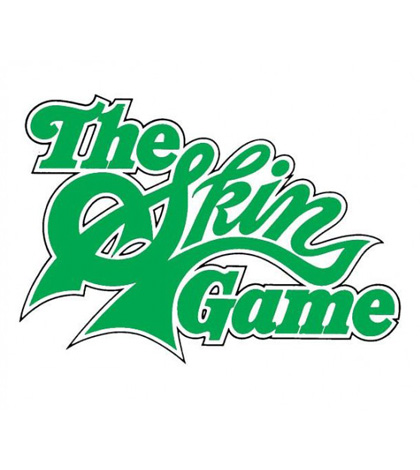
Here we are just weeks away from the biggest golf event of the year and I find myself somehow obsessed with a defunct, out-of-date, made-for-TV event that took place every year on Thanksgiving weekend.
Yes, even though the Skins Game meant Holiday shopping, Christmas trees and ski vacation planning to many of us, it also drove new viewers to golf on TV while showcasing a unique format that couldn’t be seen anywhere else. So, why even bring up the Skins Game now? Three reasons: viewership, ratings and at one point in time, it was simply so much fun.
The Masters seems to have become the one and only golf event that routinely draws in new viewers seemingly out of the woodwork who don’t normally watch golf on TV (with the US Open finishing in distant second). And viewership is what golf needs in order to attract future players to keep the game growing and thriving.
For a time in the 80s and early 90s, there was something fresh and fun about the Skins Game. In fact, the ratings for the early Skins were second only to the Masters, and I’m fairly certain that golf could use that kind of ratings boost.
If we can somehow bring the Skins Game back, albeit with some changes to make it fresh and fun again, it would give golf a nice shot in the arm during the doldrums of golf viewing that is typically experienced after the season concludes.
I figured if I am going to bring the Skins Game back, I better start right away in order to give the powers-that-be the time they need to pull it off. I know that come Halloween, if I don’t see it looming on a network schedule somewhere, I may be forced to send off a strongly-worded e-mail to someone.
THE SKINS GAME — REFRESHER COURSE 101
For those of you who are not familiar with the Skins Game, here’s a refresher:
- It was a made-for-TV event shown annually over two days of the Thanksgiving weekend that ran from 1983-2008.
- It featured an intriguing mix of four golfers comprised of the biggest names in golf. The foursome would consist of players drawn from the PGA Tour, the then-named “Senior Tour,” a legend (or two) and typically one of the younger, noteworthy pros on Tour. On some years you would get a young Tiger Woods alongside Fred Couples, Raymond Floyd and Greg Norman. Or the draw could include Lee Trevino, Jack Nicklaus, Fred Couples and Davis Love III. This format resulted in a huge boost of exposure to players on the “Senior Tour” so this was a great chance for one of the legends to show the young bucks a thing or two while simultaneously giving exposure to the Senior Tour and provide them with a well-needed boost.
- The players would compete in a hole-by-hole match with whoever shot the lowest score on that hole of getting “the Skin” (the pot) for that hole. If two or more players tied the hole (halved), no skin was won, and all of the players would proceed to the next hole with all four again eligible to win the skin (aka “carryover” or “carries”) of both holes. The carries would grow as more holes were “halved.”
- At the end, the winner would be presented with one of those larger-than-life, Publisher’s Clearinghouse-type checks that were handwritten and would be signature to the event. It was always fun to see if someone would clean the slate and win them all sending the other three home with “bupkis.” Most years, at least one of the players would walk away empty-handed which had an air of cruelty to their efforts. Such is life in the game of golf.
THE SKINS GAME — WHAT HAPPENED?
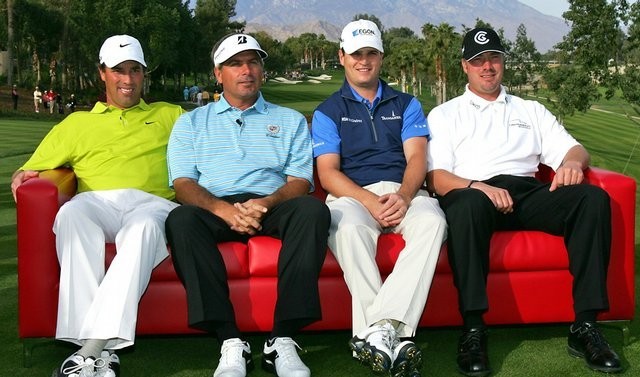
The participants for the final Skins Game in 2008, from left Stephen Ames, Fred Couples, Zach Johnson and Brett Wetterich)
When I first started watching the Skins Game, I am pretty sure that it was the only golf I would watch on TV with the Masters as the possible, lone exception. I wasn’t a golfer back then, but there was something about the Skins Game where it had this laid-back vibe, while the money was absolutely front-and-center. It was like a “get-rich-quick” scheme played out with drivers and irons on perfectly sunny days in the Southern California desert. And, man, back in the day it seemed like each hole was being played for a lot of money. Okay, it ‘s still is a lot of money to me, but as far as golf purses go, the old amounts are comparatively pedestrian. This issue may be the very crux of the problem with the Skins Game.
What happened to the Skins Game anyway? Did it still exist somewhere and I just kept missing it? Nope; it was cancelled after 2008 when the format grew stale, the players were second-tier and the TV landscape had become over-saturated with Thanksgiving football that essentially took over the airwaves for the holiday weekend.
The biggest issue that spelled doom for the Skins Game was all about the money: The top-tier pros who were the reason for early-Skins rating success eventually simply made too much money to even bother with an event that didn’t guarantee them to walk away with anything. Plus, throw in the fact that it was during the Thanksgiving weekend, and many pros would rather be home with their families. These are real obstacles, but I think with the right mix of format, money and exposure, there is a place for this event on Black Friday, leaving the rest of the Thanksgiving weekend all clear for football.
THE SKINS GAME — WHAT WE NEED TO DO TO BRING IT BACK
Here are my list demands which must be met in order to make the Skins Game relevant, enjoyable and hugely successful. I have created this list in order of importance:
1. The field includes four noteworthy, top-tier players (see below).
2. It has to include no less than two of the cream-of-the crop PGA players including a two of the following: Tiger, Rory, Phil and/or (believe it or not) Bubba.
3. Next, it has to include one of the following either flashy or established PGA stars: Fowler, Poulter, Mahan, Bradley, Westwood or GMac.
4. Finally, it can have one “wildcard” pick from the Champions Tour, LPGA, PGA or someone that has legendary status that can compete without embarrassment. This can be any of the names above or a wildcard that is both widely-known and that adds to the intrigue: Freddie, Michelle Wie, Greg Norman, Sergio, Gary Player (Why not? Have him tee from the “golds”), or even Anika. The wild card has to be a personality who transcends mainstream golf somehow.
5. All competitors and caddies are “miked” throughout the event and are assigned a dedicated camera to each player so that all aspects of the event are covered from head to toe.
6. The Skins Game should still televised over the Thanksgiving holiday but instead of two days (preferable), current-day logistics may dictate the need to have it all take place just on Black Friday (day after Thanksgiving). This will appeal to those of us who prefer not to brave the madness at the malls.
7. The purse must be huge overall: We need to start with $1.8 million purse total broken out as $100,000 per hole — at the very least. There is no escalation of hole values as the event draws on; the holes are all worth equal amounts (*see below for discussion of prize money). There may need to be a “secret sponsor’s player fee” paid to the participants in order to assure their attendance. I would prefer not to know about this payout as I prefer the fable where a pro goes home empty-handed. This amount should be split between the players and the charities of their choice or they can decide to donate all of their winnings to the charity. This should provide for excellent exposure to their charities and part of the TV coverage should include segments devoted to the charities.
8. If there is a tie/carryover on No. 18, whichever the two (or more) that tied on 18 go to a sudden death playoff; winner take all. No ties, no carries.
THE SKINS GAME — OBSTACLES TO OVERCOME
The biggest obstacle is setting the purses that are enough to draw out the huge names in golf while somehow not alienating the viewing public who could turn on the spectacle by thinking that it is just “the rich getting richer.” The reality is that the old purses from the Skins Game past, although riches beyond many of our dreams to many of us working stiffs, are not significant to the all-important “cream-of-the-crop” list mentioned above. The answer to this quandary of balancing large purses to attract the top names while not making them look greedy lies somewhere in having these massive purses committed partially (or substantially) to the charities of choice to the players. As mentioned, the spotlight to the charities could be huge to them while providing goodwill from the competitors themselves showing their allegiance to these organizations.
The second big obstacle lies in attracting this top talent on a holiday weekend, especially when the top talent already have more money than they can spend in a lifetime. I do know know the “ins and outs” of making pros clear their calendars for an event, so this may be like to trying to force LeBron James into the Slam Dunk contest. But, I would hope that the benefit to their respective charities combined with the massive exposure to the event would hopefully be enough to attract the big names.
THE SKINS GAME — WHAT MAKES IT SO FUN AND UNIQUE?
My main reason that this is a special event is due to the unbelievable access that the nature of the event grants to the viewers. For nearly every golf broadcast, we as viewers bounce from leader to leader on hole to hole where we see a variety of putts, drives, irons, etc. However, we don’t get a great chance to really follow players from shot to shot like we can as a member of the gallery. Just once a year, I would really enjoy hearing the banter between players, caddies, and competitors in a shot-by-shot format. It’s a different viewing experience but overall fun and an eye-opening glimpse into the pro mindset. Plus, the pros themselves seemed to genuinely enjoy the event. They would all get into the act and let their hair down a bit giving us a rare glimpse into what they are like away from glaring lights of heated competition. But, make no mistake about it: Every pro wanted to win the most skins and none ever wanted to get shut out.
In order for this to work, the players and caddies all need to be miked up as they have done in the past. This allows us to get into their discussions when planning shots, strategies, and execution. This format exposes us to live each shot with them as they try to figure out a way to win the hole outright. In fact, I recall that this was the only event where I really ever saw real conversations between players and their caddies from shot to shot and hole to hole. I also remember enjoying the exchanges between the players themselves. I liked the “good shot,” “nice play” and “how’s the family doing” type of stuff that all of us golfers do when we are out playing.
I remember watching when guys would get shut-out and thinking how hard it would be for the losing pro to see someone like Norman walk away with $800,000, while Freddie scooped up a paltry $40,000, but the loser got nothing but bills for the trip. That’s the breaks in the Skins Game. A guy like Norman could do nothing all day, watch Tiger and Jack halve hole after hole, then he sticks it close on 17 and walks away with everything. There’s nothing quite like massive reward for minimum effort.
Give me my Tiger TV! Let’s throw Rory into the Shark Tank. Heck, while we are at it, let’s see The Shark himself make a return! How about Anika? She still has game, I bet. Throw in a Bubba and sprinkle in a marketing-machine like a Rickie or a Poulter and we have ourselves some good turkey TV! So, I’m looking for your tweets, golf fans! I promise that this would work. It’s been gone long enough and it’s high-time for the Skins to come back to a TV near you. Let’s get the Skins Game back!
- LIKE7
- LEGIT0
- WOW0
- LOL0
- IDHT0
- FLOP0
- OB0
- SHANK0
19th Hole
Vincenzi’s 2024 RBC Heritage betting preview: Patrick Cantlay ready to get back inside winner’s circle

Just a two-hour drive from Augusta National, the PGA TOUR heads to Harbour Town Golf Links in Hilton Head Island, S.C. Hilton Head Island is a golfer’s paradise and Harbour Town is one of the most beautiful and scenic courses on the PGA TOUR.
Harbour Town Golf Links is a par-71 that measures 7,121 yards and features Bermuda grass greens. A Pete Dye design, the course is heavily tree lined and features small greens and many dog legs, protecting it from “bomb-and-gauge” type golfers.
The field is loaded this week with 69 golfers with no cut. Last year was quite possibly the best field in RBC Heritage history and the event this week is yet another designated event, meaning there is a $20 million prize pool.
Most of the big names on the PGA Tour will be in attendance this week with the exceptions of Hideki Matsuyama and Viktor Hovland. Additionally, Webb Simpson, Shane Lowry, Gary Woodland and Kevin Kisner have been granted sponsors exemptions.
Past Winners at Harbour Town
- 2023: Matt Fitzpatrick (-17)
- 2022: Jordan Spieth (-13)
- 2021: Stewart Cink (-19)
- 2020: Webb Simpson (-22)
- 2019: CT Pan (-12)
- 2018: Sotoshi Kodaira (-12)
- 2017: Wesley Bryan (-13)
- 2016: Branden Grace (-9)
- 2015: Jim Furyk (-18)
In this article and going forward, I’ll be using the Rabbit Hole by Betsperts Golf data engine to develop my custom model. If you want to build your own model or check out all of the detailed stats, you can sign up using promo code: MATTVIN for 25% off any subscription package (yearly is best value).
Key Stats For Harbour Town
Let’s take a look at key metrics for Harbour Town Golf Links to determine which golfers boast top marks in each category over their past 24 rounds.
Strokes Gained: Approach
Strokes Gained: Approach is exceedingly important this week. The greens at Harbour Town are about half the size of PGA TOUR average and feature the second-smallest greens on the tour. Typical of a Pete Dye design, golfers will pay the price for missed greens.
Total SG: Approach Over Past 24 Rounds
- Scottie Scheffler (+1.27)
- Tom Hoge (+1.27)
- Corey Conners (+1.16)
- Austin Eckroat (+0.95)
- Cameron Young (+0.93)
Good Drive %
The fairways at Harbour Town are tree lined and feature many dog legs. Bombers tend to struggle at the course because it forces layups and doesn’t allow long drivers to overpower it. Accuracy is far more important than power.
Good Drive % Over Past 24 Rounds
- Brice Garnett (88.8%)
- Shane Lowry (+87.2%)
- Akshay Bhatia (+86.0%)
- Si Woo Kim (+85.8%)
- Sepp Straka (+85.1%)
Strokes Gained: Total at Pete Dye Designs
Pete Dye specialists tend to play very well at Harbour Town. Si Woo Kim, Matt Kuchar, Jim Furyk and Webb Simpson are all Pete Dye specialists who have had great success here. It is likely we see some more specialists near the top of the leaderboard this week.
SG: TOT Pete Dye per round over past 36 rounds:
- Xander Schauffele (+2.27)
- Scottie Scheffler (+2.24)
- Ludvig Aberg (+2.11)
- Brian Harman (+1.89)
- Sungjae Im (+1.58)
4. Strokes Gained: Short Game (Bermuda)
Strokes Gained: Short Game factors in both around the green and putting. With many green-side bunkers and tricky green complexes, both statistics will be important. Past winners — such as Jim Furyk, Wes Bryan and Webb Simpson — highlight how crucial the short game skill set is around Harbour Town.
SG: SG Over Past 24 Rounds
- Jordan Spieth (+1.11)
- Taylor Moore (+1.02)
- Wyndham Clark (+0.98)
- Mackenzie Hughes (+0.86)
- Andrew Putnam (+0.83)
5. Greens in Regulation %
The recipe for success at Harbour Town Golf Links is hitting fairways and greens. Missing either will prove to be consequential — golfers must be in total control of the ball to win.
Greens in Regulation % over past 24 rounds:
- Brice Garnett (+75.0%)
- Scottie Scheffler (+69.9%)
- Corey Conners (+69.0%)
- Shane Lowry (+68.3%)
- Patrick Rodgers (+67.6%)
6. Course History
Harbour Town is a course where players who have strong past results at the course always tend to pop up.
Course History over past 24 rounds:
- Patrick Cantlay (+2.34)
- Cam Davis (+2.05)
- J.T. Poston (+1.69)
- Justin Rose (+1.68)
- Tommy Fleetwood (+1.59)
The RBC Heritage Model Rankings
Below, I’ve compiled overall model rankings using a combination of the five key statistical categories previously discussed — SG: Approach (24%), Good Drives (20%), SG: SG (14%), SG: Pete Dye (14%), GIR (14%), and Course History (14%)
- Shane Lowry
- Russell Henley
- Scottie Scheffler
- Xander Schauffele
- Corey Conners
- Wyndham Clark
- Christiaan Bezuidenhout
- Matt Fitzpatrick
- Cameron Young
- Ludvig Aberg
2024 RBC Heritage Picks
Patrick Cantlay +2000 (FanDuel)
With the exception of Scottie Scheffler, the PGA Tour has yet to have any of their star players show peak form during the 2024 season. Last week, Patrick Cantlay, who I believe is a top-5 players on the PGA Tour, took one step closer to regaining the form that’s helped him win eight events on Tour since 2017.
Cantlay limped into the Masters in poor form, but figured it out at Augusta National, finishing in a tie for 20th and ranking 17th for the week in Strokes Gained: Ball Striking. The former FedEx Cup champion will now head to one of his favorite golf courses in Harbour Town, where he’s had immaculate results over the years. In his six trips to the course, he’s only finished worse than 7th one time. The other finishes include three third places (2017, 2019, 2023) and one runner-up finish (2022). In his past 36 rounds at Harbour Town, Cantlay ranks 1st in Strokes Gained: Total per round at the course by a wide margin (+2.36).
Cantlay is winless since the 2022 BMW Championship, which is far too long for a player of his caliber. With signs pointing to the 32-year-old returning to form, a “signature event” at Harbour Town is just what he needs to get back on the winning track.
Tommy Fleetwood +3000 (FanDuel)
I truly believe Tommy Fleetwood will figure out a way to win on American soil in 2024. It’s certainly been a bugaboo for him throughout his career, but he is simply too talented to go another season without winning a PGA Tour event.
At last week’s Masters Tournament, Fleetwood made a Sunday charge and ended up finishing T3 in the event, which was his best ever finish at The Masters. For the week, the Englishman ranked 8th in the field in Strokes Gained: Approach, 10th in Strokes Gained: Ball Striking and 16th in Strokes Gained: Putting.
Harbour Town is a perfect layout for Fleetwood, and he’s had relative success at this Pete Dye design in the past. In his four trips to the course, he’s finished inside of the top 25 three times, with his best finish, T10, coming in 2022. The course is pretty short and can’t be overpowered, which gives an advantage to more accurate players such as Fleetwood. Tommy ranks 8th in the field in Good Drive % and should be able to plot his way along this golf course.
The win is coming for Tommy lad. I believe there’s a chance this treasure of a golf course may be the perfect one for him to finally break through on Tour.
Cameron Young +3300 (FanDuel)
Cameron Young had a solid Masters Tournament last week, which is exactly what I’m looking for in players who I anticipate playing well this week at the RBC Heritage. He finished in a tie for 9th, but never felt the pressure of contending in the event. For the week, Young ranked 6th in Strokes Gained: Off the Tee and 6th in Strokes Gained: Ball Striking.
Despite being one of the longest players off the tee on the PGA Tour, Young has actually played some really good golf on shorter tracks. He finished T3 at Harbour Town in 2023 and ranks 20th in the field in Good Drive% and 16th in Greens in Regulation in his past 24 rounds. He also has strong finishes at other shorter courses that can take driver out of a players hand such as Copperhead and PGA National.
Young is simply one of the best players on the PGA Tour in 2024, and I strongly believe has what it takes to win a PGA Tour event in the very near future.
Corey Conners +5500 (FanDuel)
Corey Conners has had a disappointing year thus far on the PGA Tour, but absolutely loves Harbour Town.
At last week’s Masters Tournament, the Canadian finished T30 but ranked 20th in the field in Strokes Gained: Approach. In his past 24 rounds, Conners ranks 3rd in the field in Strokes Gained: Approach, 3rd in Greens in Regulation % and 24th in Good Drive %.
In Conners’ last four trips to Harbour Town, his worst finish was T31, last season. He finished T4 in 2021, T12 in 2022 and ranks 8th in Strokes Gained: Total at the course over his past 36 rounds.
Conners hasn’t been contending, but his recent finishes have been encouraging as he has finished in the top-25 in each of his past three starts prior to The Masters, including an impressive T13 at The PLAYERS. His recent improvement in ball striking as well as his suitability for Harbour Town makes Conners a high upside bet this week.
Shane Lowry (+7500) (FanDuel)
When these odds were posted after Lowry was announced in the field, I have to admit I was pretty stunned. Despite not offering much win equity on the PGA Tour over the last handful of years, Shane Lowry is still a top caliber player who has the ability to rise to the top of a signature event.
Lowry struggled to score at The Masters last week, but he actually hit the ball really well. The Irishman ranked 1st for Strokes Gained: Approach on the week and 7th in Strokes Gained: Ball Striking. As usual, it was the putter that let him down, as he ranked 60th in the field in Strokes Gained: Putting.
Harbour Town is most definitely one of Lowry’s favorite courses on the PGA Tour. In his six starts there, he’s finished in the top 10 three times, including third twice. Lowry is sensational at Pete Dye designs and ranks 7th in Strokes Gained: Total in his past 36 rounds on Dye tracks.
Lowry is perfect for Harbour Town. In his past 24 rounds, he ranks 5th in Strokes Gained: Approach, 2nd in Good Drive% and 5th in Green in Regulation %. If he figures it out on the greens, Shane could have his first win in America since 2015.
Lucas Glover +12000 (FanDuel)
This is one of my weekly “bet the number” plays as I strongly believe the odds are just too long for a player of Glover’s caliber. The odds have been too long on Glover for a few weeks now, but this is the first event that I can get behind the veteran being able to actually contend at.
Glover is quietly playing good golf and returning to the form he had after the understandable regression after his two massive victories at the end of 2023. He finished T20 at The Masters, which was his best ever finish at Augusta National. For the week, Lucas ranked 18th for Strokes Gained: Approach and 20th in Strokes Gained: Ball Striking.
Over his past 24 rounds, Glover ranks 9th in Strokes Gained: Approach and 13th in Good Drive %. Harbour Town is a short course that the 44-year-old will be able to keep up with the top players on Tour off the tee. He’s played the course more than 20 times, with mixed results. His best finishes at Harbour Town include a T7 in 2008, but recently has a finish of T21 in 2020.
Glover has proven he can contend with the stars of the Tour on any given week, and this number is flat out disrespectful.
- LIKE25
- LEGIT4
- WOW1
- LOL1
- IDHT1
- FLOP2
- OB0
- SHANK1
19th Hole
Vincenzi: The 6 biggest takeaways from the 2024 Masters
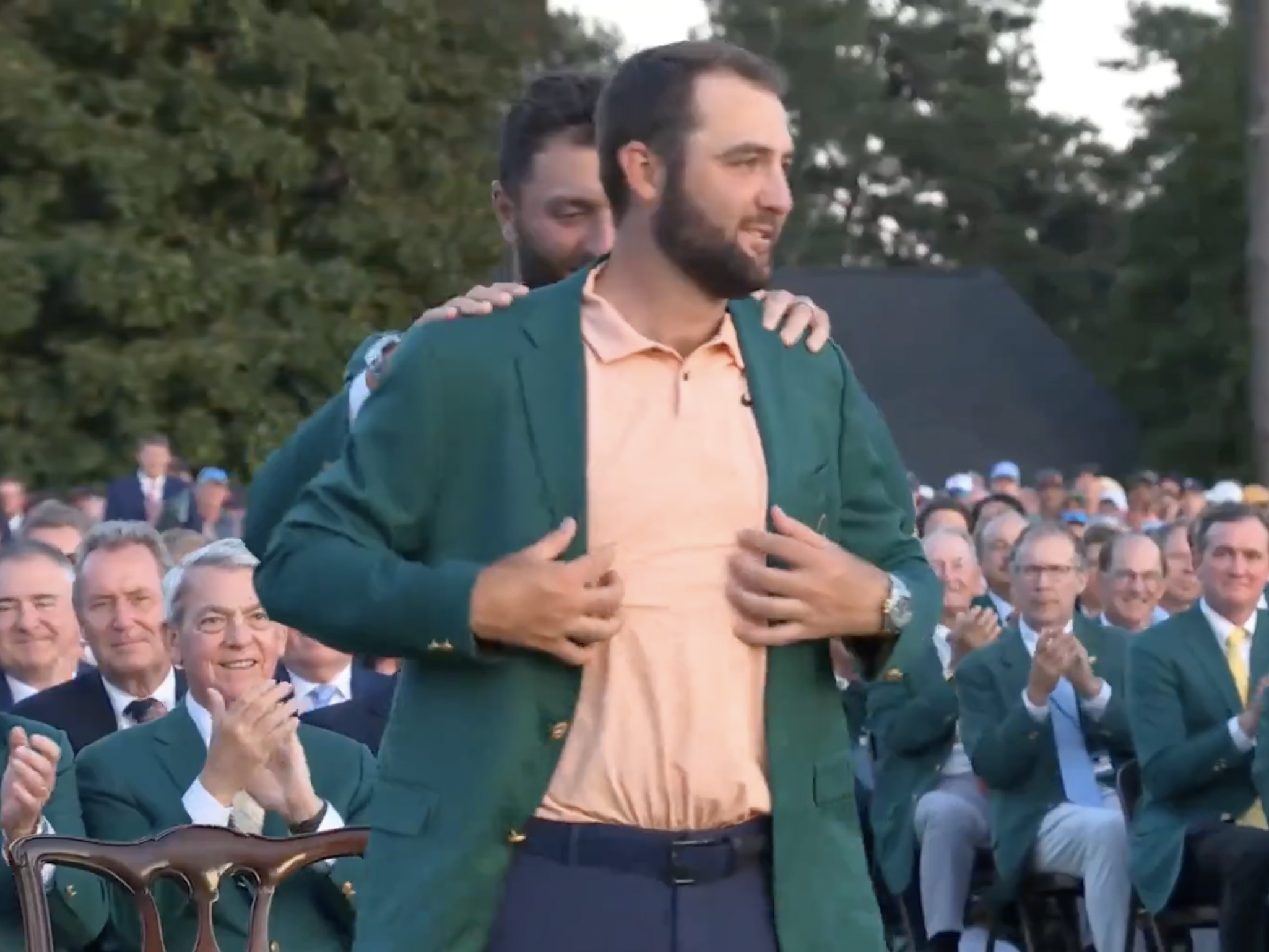
The 2024 Masters offered up plenty of excitement throughout the week with Scottie Scheffler delivering when it mattered to live up to his pre-tournament favorite tag. With the year’s opening major now in the books, here are my six biggest takeaways from the 2024 Masters.
Scheffler In a League of His Own
In the most impressive way possible, Scottie Scheffler won the Masters without having his absolute best stuff. For the week, Scottie ranked 19th in Strokes Gained: Approach, which is a category the number player in the world typically dusts the rest of the field in. After a strong approach day on Thursday, the 27-year-old lost strokes to the field on approach on Friday and Saturday, before gaining on Sunday. The iron performance was more than solid, but it was an all-around game that helped Scheffler get it done around Augusta National.
For a year or more, the narrative around Scheffler has been, “With his ball striking, if he can just putt to field average, he’ll be unbeatable.” At Augusta, his ball striking came back down to earth, but his touch around the greens and ability to manage the golf course demonstrated why he is the best player on the planet right now. For the week, Scheffler ranked 1st in the field in Strokes Gained: Around the Green and 24th in Strokes Gained: Putting.
For the time being, there is a major gap between Scottie Scheffler and the second-best player in the world, whoever that may be.
The Future is Now
Ludvig Aberg went into his first back-nine at the Masters with a legitimate shot to win the tournament. When he teed it up on the treacherous 11th hole, he was one behind Scottie Scheffler, who had just stuck one to a few feet on the 9th. By the time he approached his tee shot, which was perfectly striped down the left side of the fairway, he was two behind. Unfortunately, the 24-year-old got too aggressive with his approach at the 11th and found the water, making double bogey. Ludvig rebounded nicely and finished the event in solo second place.
With the Masters now in the rearview, it’s never been more evident that Ludvig Aberg is no longer an “up-and-comer” — he has arrived. The Swede has been an integral part of a winning European Ryder Cup team and has now contended at Augusta National. With a calm demeanor, a picture-perfect swing, and a build and stature that appears as if it was built in a lab, Ludvig Aberg is already amongst the world’s best. I’d be extremely surprised if he wasn’t in the mix at next month’s PGA Championship at Valhalla.
Nostalgia Wins
I try to avoid as many cliches as possible, but there’s something about the Masters that brings out the sentimentality in me. Tiger Woods strategically making his way around Augusta National without all of the physical tools that made him arguably the most dominant athlete in the history of sports will always be riveting, regardless of what score he shoots. Woods made it interesting until a tough stretch of holes on Saturday, but he ultimately wore down, shooting 16 over for the week in difficult conditions. It’s remarkable that the 15-time major champion was able to put together a few solid rounds of golf despite barely playing any competitive golf in 2024. As long as Woods tees it up at Augusta, we will all continue to be mesmerized by it.
Verne Lundquist’s 40th and final Masters Tournament was also a must-watch aspect of the event. The iconic voice of Lundquist and his calls throughout the years still give me chills each time I hear them. Verne is an icon of the game and will be missed in future renditions of the Masters.
The Masters also brings another element that is unique to the tournament. Former champions turn back the clock to battle with the golf course again which creates some amazing stories. There are a few that stick out this year and were an absolute pleasure to witness. 61-year-old Vijay Singh made the cut for the first time since 2018 and shot a pretty incredible even-par, 72 on Sunday. 58-year-old José María Olazábal made the cut as well, reminding us why fellow Spaniard Jon Rahm sought his valuable advice prior to his Masters victory in 2022.
Regardless of who wins, the Masters always delivers.
Bryson Moves the Needle
Plenty will disagree with me on this point, but outside of Tiger Woods, and potentially Rory McIlroy and Jordan Spieth, no one moves the needle in golf as much as Bryson DeChambeau. The uniqueness in which Bryson approaches the game has always been fascinating, and if he gets near the top of the leaderboard at any major championship, whether it’s to root for him or against him, people are interested.
It began on Monday with a pretty bizarre story of DeChambeau using 3D-printed irons that got just got cleared for use by the USGA when the week began. It once again felt like a storyline that would only be possible with a character as eccentric as Bryson. He then raced off to a first-round lead in tough conditions, reminding the world of what made him such a great golfer to begin with. He made some mistakes on the weekend, but still finished a career best T6 at The Masters.
Bryson is more than just quirky; he is a former U.S. Amateur Champion and U.S. Open who I believe will contend for more majors in the future. I will continue to root for DeChambeau, but I’m perfectly content with the fact that plenty will root against him, and I encourage those people to do so. That’s what makes it fun.
LIV Walks Away Empty-Handed
Last year, there were a multitude of questions about LIV players coming into the year’s first major. They had played very limited tournament golf, and critics of LIV questioned whether the 54-hole events were enough to sharpen the players enough to compete against the best in the world on the biggest stage.
The results were fascinating, with LIV players all over the leaderboard. Brooks Koepka held the 36- and 54-hole lead, with Phil Mickelson and Patrick Reed finishing T2 and T4, giving LIV three golfers in the top-4 of the leaderboard.
This season, with even more time removed and with some more massive additions to the roster, the intrigue surrounding LIV players at Augusta was once again palpable. While some players, including Bryson DeChambeau, exceeded expectations, I can’t help but walk away from the Masters feeling underwhelmed by the performance of the LIV players.
Brooks Koepka finished runner-up last season and is a certified major championship killer. The 5-time major champ was never involved and simply didn’t have it at Augusta. Dustin Johnson put together a putrid performance, shooting 13 over for his two rounds, making it fair to wonder if his days of contending at major championships are over as he rapidly approaches his 40th birthday.
Jon Rahm and Joaquin Niemann were both players who were amongst the favorites this week, but Rahm was faced with the daunting duties of defending champion and Niemann proved he was still not quite ready to master the quirks of Augusta National, bleeding strokes both around and on the greens.
To be fair, when all was said and done, LIV had four players in the top twelve at The Masters. Tyrrell Hatton stormed the leaderboard early on Sunday, finishing T9 and earning himself an invite back to Augusta next season. Cam Smith and Patrick Reed put together gritty performances, which isn’t too surprising considering the fact that they both absolutely love Augusta National, but neither ever felt a real threat to win. There’s no doubt the players on LIV are good, and that’s why some encouraging leaderboard positions aren’t enough. They needed to contend.
With no players part of the storyline on Sunday, I view the first major of the year as a disappointment for LIV. The players will head into next month’s PGA Championship at Valhalla with a lot to prove.
Rory’s Struggles Continues
Rory struggling at Augusta National is no surprise at this point. The four-time major champion has now had 10 attempts to complete the career grand slam and has never had a chance to win. His T2 in 2022 was deceiving, the Northern Irishman stormed the leaderboard on Sunday, but was never in contention, and never got within three shots of the winner, Scottie Scheffler.
I didn’t expect Rory to win, but I have to admit that this year felt a bit different. McIlroy played the week prior to the Masters, which he typically doesn’t do, and finished third at the Valero Texas Open. He gained 7.56 strokes on approach and 2.0 strokes off the tee, which told me that his visit with world-renowned swing coach, Butch Harmon, after the Players Championship paid dividends.
McIlroy also approached the media quite differently. He cut his pre-tournament press conference short after only 10 minutes and seemed to be laser-focused on just playing golf.
Despite the different approach to the Masters, the results were the same. McIlroy struggled over the course of the week, finishing T22 (+4) and never sniffed a decent weekend position on the leaderboard. It’s back to the drawing board for McIlroy, and I have doubts that he will ever figure it out at Augusta.
- LIKE49
- LEGIT9
- WOW4
- LOL1
- IDHT2
- FLOP2
- OB2
- SHANK7
19th Hole
Vincenzi: The 8 best prop bets for the 2024 Masters
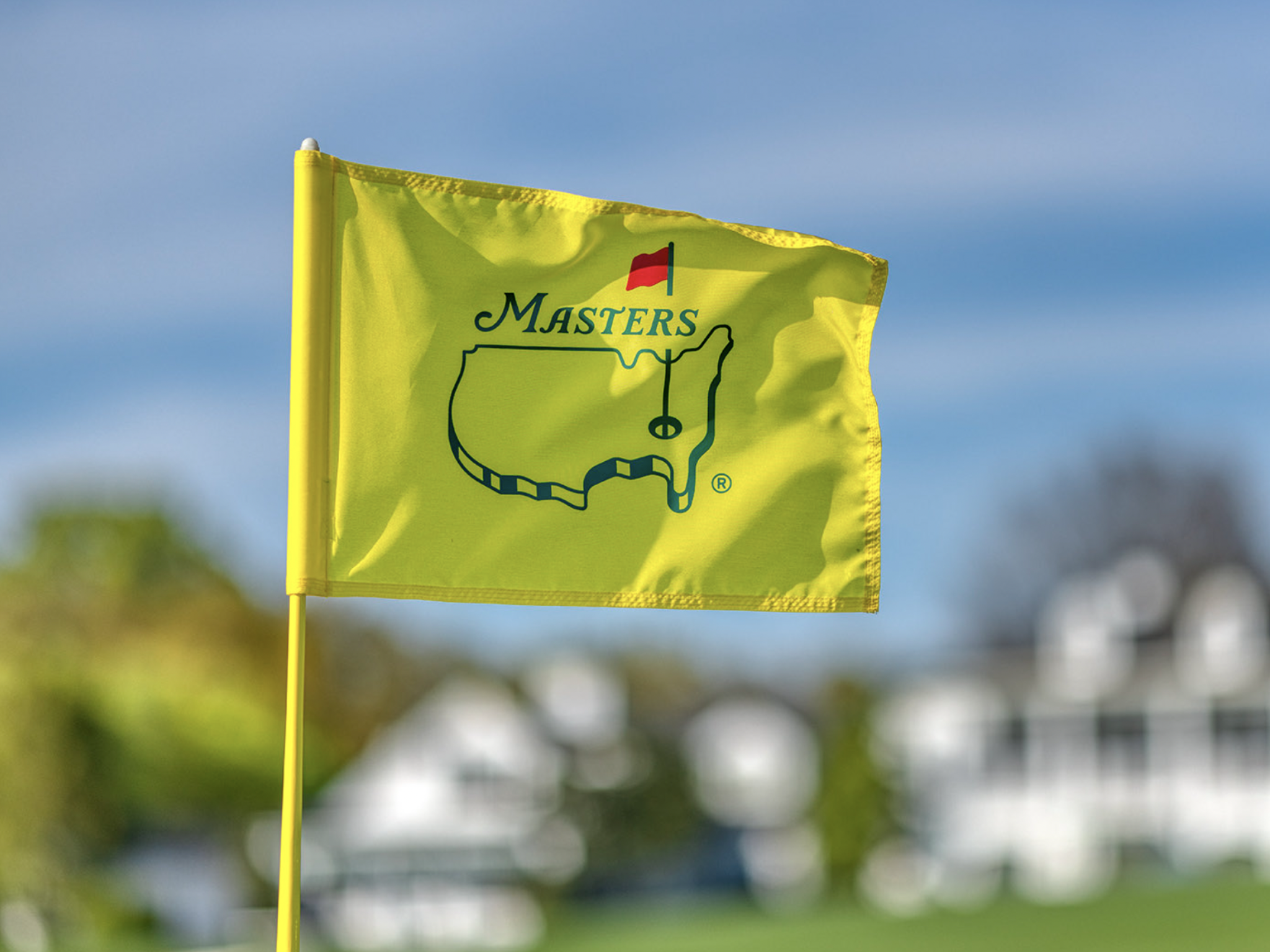
We’ve finally reached The Masters and excitement is at an all-time high. The world of golf has been fractured for the better part of two years, but for a week at Augusta National, all of the outside noise will disappear. All of the best players in the world will be together seeking to make history.
In addition to betting on The Masters champion. This is one of the few weeks of the year where there are so many more markets to explore, with value to be had in plenty of different categories.
Throughout this article, I’ll discuss all of my favorite props and players for the 2024 Masters.
Placement Bets:
Tony Finau Top 5 +750 (DraftKings):
I badly wanted to include Tony Finau in my outright betting selections, but I simply ran out of room on my card. Additionally, it’s slightly difficult to see him hitting the putts necessary to win the Masters on back nine on Sunday. However, I do strongly believe he will play great golf this week at Augusta National.
In his past 24 rounds, Finau ranks 4th in Strokes Gained: Approach is always amongst the best drivers of the golf ball in the game. Back in 2019, Finau had a great chance to win The Masters. I expect him to be hanging around over the weekend once again in 2024.
Gary Woodland Top 20 +550 (DraftKings), Gary Woodland to make the cut -110 (DraftKings):
Last season, Gary Woodland had his best ever finish at The Masters in his eleven tries. The 39-year-old finished T14 and played incredibly steady across all four rounds.
In Woodland’s most recent start at the Texas Children’s Houston Open, he struck the ball incredibly well. He led the field in Strokes Gained: Approach (+8.8) and Strokes Gained: Ball Striking (+10.0).
Gary has been working with Butch Harmon and absolutely flushing the ball both in tournaments and during practice.
Woodland appears to be healthy once again and in a great place physically and mentally. If he can build off his impressive performance at Augusta last year, he can place inside the top ten in 2024.
Additionally, the make the cut number on Woodland seems generous considering the number of players who miss the cut will be relatively small this week. Woodland is striking it well enough to make the cut even if he’s hindered by a balky putter once again.
Thorbjorn Olesen Top 20 +400 (FanDuel):
The Thunder Bear, Thorbjorn Olesen, made his Masters debut in 2013 and finished an incredibly impressive T6 for the week. In the two additional starts he’s made at Augusta National since then, the Dane has continued to be incredibly solid, finishing T44 and T21.
This week, Olesen heads into the week playing some good golf. He gained 3.8 strokes on approach and 5.52 strokes around the green at last week’s Valero Texas Open on his way to a strong T14 finish. Back in January, he won the Ras Al Khaimah Championship on the DP World Tour.
Olesen has the skill set to be successful at Augusta and seems primed for a good performance this week.
Top Nationalities:
Sergio Garcia Top Spanish Player +280 (DraftKings):
I believe Sergio Garcia can get into contention this week with the way he’s striking the ball in addition to his good vibes with a refurbished version of the Scotty Cameron that he used at the 1999 PGA Championship at Medinah.
I am slightly concerned about the emotional letdown he may face after losing in a playoff at LIV Miami, but I believe a veteran and former Masters champion should be able to regroup and focus on an event far more meaningful.
This is essentially a tournament head-to-head with Jon Rahm at +280. While Rahm deserves to be respected this week, the history of the lack of success of defending champions at The Masters is difficult to ignore.
Joaquin Niemann Top South American Player -230 (FanDuel):
While I hate paying this much juice, I don’t see a world in which Joaquin Niemann isn’t the top South American this week at The Masters. Joaco comes in playing better golf than anyone in the world not named Scottie Scheffler and has a serious chance to win the green jacket.
He only needs to beat two players: Emiliano Grillo and Camilo Villegas.
Tournament Head-to-Heads:
Justin Thomas -110 over Collin Morikawa
JT isn’t having his best season but is playing a lot better than he is getting credit for at the moment. In the past three months, there are only six players on the PGA Tour who have averaged 1.7 Strokes Gained: Tee to Green or better. Justin Thomas (+1.7) is one of the six and is currently tied with Rory McIlroy (+1.7).
Morikawa, on the other hand, has been extremely poor with his irons, which is incredibly uncharacteristic for him. I can’t help but feel like something is completely off with the two-time major champion.
Tony Finau -110 over Wyndham Clark
I explained in the placement section why I’m so high on Tony Finau this week. With how well he’s striking the ball, it seems as if his floor is extremely high. I’m not sure if he can make the putts to win a green jacket but I believe he will be in the mix similarly to 2019 when Tiger Woods emerged from a crowded pack of contenders.
Clark is a debutant, and while some debutants have had success at The Masters, it certainly poses a challenge. I also don’t believe Augusta National suits Clark as well as some of the other major championship venues.
- LIKE9
- LEGIT5
- WOW3
- LOL0
- IDHT0
- FLOP0
- OB0
- SHANK3
-

 19th Hole6 days ago
19th Hole6 days agoDave Portnoy places monstrous outright bet for the 2024 Masters
-
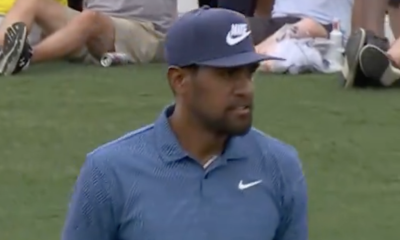
 19th Hole2 weeks ago
19th Hole2 weeks agoThings got heated at the Houston Open between Tony Finau and Alejandro Tosti. Here’s why
-

 19th Hole1 week ago
19th Hole1 week agoTiger Woods arrives at 2024 Masters equipped with a putter that may surprise you
-

 19th Hole2 weeks ago
19th Hole2 weeks agoReport: Tiger Woods has ‘eliminated sex’ in preparation for the 2024 Masters
-

 19th Hole2 days ago
19th Hole2 days agoTwo star names reportedly blanked Jon Rahm all week at the Masters
-

 19th Hole1 day ago
19th Hole1 day agoNeal Shipley presser ends in awkward fashion after reporter claims Tiger handed him note on 8th fairway
-
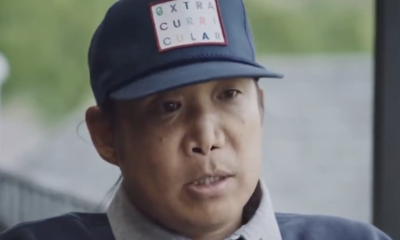
 19th Hole2 weeks ago
19th Hole2 weeks agoAddiction, spinal fusion, and scam artists – Everything Anthony Kim revealed in candid interview with David Feherty
-

 19th Hole2 weeks ago
19th Hole2 weeks agoAnthony Kim says doctors told him that he ‘may not have much time left’ ahead of LIV return

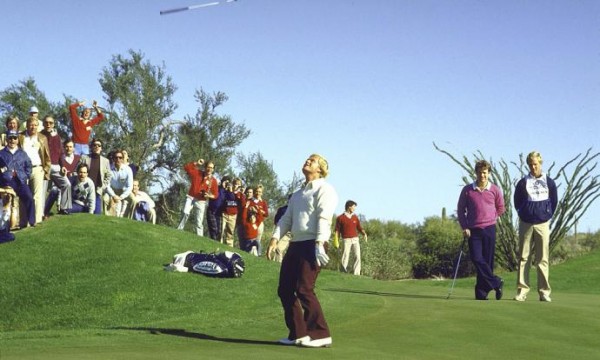

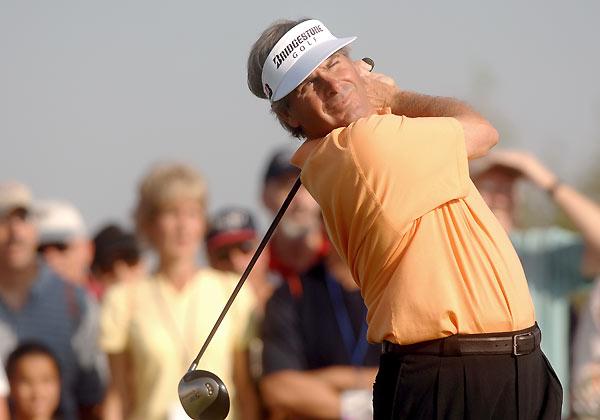
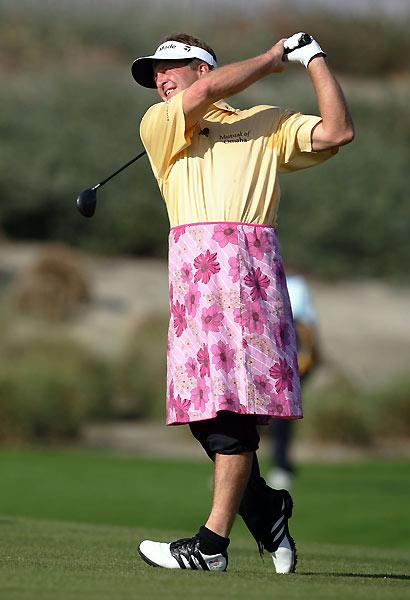















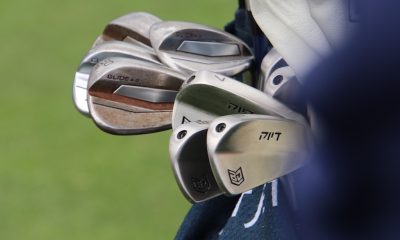

8thehardway
Apr 2, 2013 at 4:34 pm
My idea of a great skins game would be to open it to any non-tour player putting up a $5,000 entry fee. Based on the number of entries have qualifying rounds pay out $1,000/hole for 8 holes, $2,000 for the next 6 holes, etc. Ratchet it up as the brackets tighten by requiring winners of of each flight to re-ante 80% of their winnings in order to advance and raise the payouts.
Add caddies who will get a percentage of the winners purse, make everyone stay in the same house the night before and you get hours of cheap, exciting programming.
Dane
Apr 1, 2013 at 2:06 pm
Ben, not everyone is interested in watching just Tiger or the big names. The format and players do need to be changed. I’d love to watch Watson and Freddy in a skins foursome. Or how bout instead of giving a cash prize they find a way to format it for the best amateurs to play for sponsors exemptions or something of that sort? I think there are plenty of people that would love to watch the up and coming names of the game. It won’t draw ratings like the masters, but there could be a place for it.
Chris Hibler
Apr 19, 2013 at 11:00 pm
Great “out-of-the-box” suggestions~
Tservos
Apr 1, 2013 at 9:36 am
I enjoyed the Skins Game when it was new. But now that there are 1,000 other things which compete for our attention combined with the fact that they have to go way down the Money List to get 4 ppl who want to give up their time to play golf, I see it as an idea whose time has past.
I remember back in the 70s the football teams who played in the Super Bowl would meet in Hawaii and compete in all sorts of activities like rowing and tug of war. It was really fun to watch but I can’t imagine for a second it being successful these days. You couldn’t get millionaire football players today to fly to Hawaii to do silly things in the sand.
benseattle
Mar 30, 2013 at 11:25 am
<>
Duh.
So what sort of “inside chatter” are you expecting… verifiable audio of Tiger snapping at Joe LaCava after a bad yardage? Phil complaining to Bones that he didn’t take his Enbrel on time? Rory going behind the ropes to rail at Carolyn for not emptying the dishwasher? Please. This business of slapping a microphone on player or caddy and expecting anything more than the usual dull “what’s the yardage?” is only a pipedream. The author speaks of “Tiger TV!” as though his game has never before been on television but once you’re past the handful of even mildly interesting stars, then what? Let’s keep in mind that it wasn’t just plummeting ratings that sent The Skins Game off to it’s long-overdue burial; it was the complete lack of interest in those few players who fans would actually want to see over Thanksgiving. When you can’t get Tiger or Phil or Rory or Bubba to tee it up in your little “exhibition,” what you have is an event that only one person cares about: an amateur golf writer in desperate need of a topic.
Chris Hibler
Mar 29, 2013 at 7:03 pm
Although benseattle makes some good points, albeit harshly — many of them are the same points I spelled out in my piece above as far as why the Skins had grown tired. But, what he fails to recognize is that the format is unique, especially from a viewing perspective. What other tournament actually gives us shot-by-shot coverage along with conversations between players & caddies? None. There is a place for this event on a day where there is no other golf played. Remember: the Skins is an exhibition, not a tournament.
benseattle
Mar 29, 2013 at 3:30 pm
This endless plea to regurgitate an event that has run its course was so lengthy, so monotonous that few at GolfWRX will both trudging through it all. The once-unique Skins Game was often a hightlight of Thanksgiving weekend, an unexpected helping of long-gone golf in the midst of the NFL season. But as the years past and the stars became journeymen (Stephen Ames…Brett Wetterich??) the made-for-TV show become stale, uninteresting and “must-avoid TV.” You think people will tune in to see already-rich golfers play for what… 5 million dollars a hole? You’re dreaming. The Skins Game died because it was both pointless and meaningless. It answered no questions, it proved nothing. The idea that someone would actually hope to resurrect such a tired and lame promotion shows that you just don’t pay much attention to the PGA Tour; you know… the place where REAL golf is played?
Hunterdog
Mar 31, 2013 at 8:35 am
Ben – I agree. As an avid golfer, and occasional TV golf viewer, I have no interest in watching the second and third tier of the Tour line their pockets with boring golf. Now ( not even possible) get Tiger, Phil, Rory and maybe Bubba, on real risk reward venue; I’d tune into that. Otherwise, let the pigskin fly and maybe, just maybe, I can get in not her round before the season ends.
Hunterdog
Mar 31, 2013 at 8:36 am
Sorry, meant be “get in another round” before the season ends.
Matt Newby, PGA
Mar 29, 2013 at 1:01 pm
Second!
Dane
Mar 29, 2013 at 11:22 am
Bring it back!